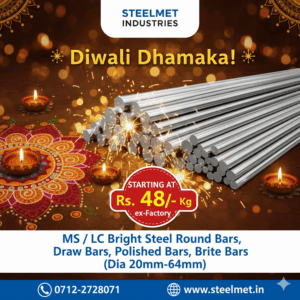Introduction
When selecting the right steel grade for your project, understanding subtle differences in composition and standards is crucial. EN 10083-2 C18E, EN 10277 C18, and EN 10278 C15E are widely used in automotive, machinery, and general engineering—but how do they compare?
This guide breaks down their chemical composition, similarities, key differences, and potential equivalences. Plus, discover how SteelMet Industries provides these grades in multiple shapes, sizes, and conditions to meet your specific needs.
Chemical Composition Comparison
| Element (%) | EN 10083-2 C18E | EN 10277 C18 | EN 10278 C15E |
|---|---|---|---|
| Carbon (C) | 0.15 – 0.21 | 0.15 – 0.21 | 0.12 – 0.18 |
| Silicon (Si) | 0.15 – 0.40 | ≤ 0.40 | ≤ 0.40 |
| Manganese (Mn) | 0.60 – 0.90 | 0.60 – 0.90 | 0.60 – 0.90 |
| Phosphorus (P) | ≤ 0.025 | ≤ 0.035 | ≤ 0.035 |
| Sulfur (S) | ≤ 0.025 | ≤ 0.035 | ≤ 0.035 |
| Chromium (Cr) | ≤ 0.40 | ≤ 0.40 | ≤ 0.40 |
| Other Elements | – | – | Lead (Pb) may be added |
🔹 Key Takeaway: While C18E and C18 are nearly identical chemically, C15E has slightly lower carbon and may include lead for machinability.
Key Similarities & Differences
✔ Similarities:
✅ Medium-carbon steels – Good balance of strength and formability.
✅ Manganese & Silicon ranges – Comparable across all three grades.
✅ General applications – Used in gears, shafts, bolts, and structural components.
❌ Differences:
🔸 EN 10083-2 C18E – Stricter P & S limits (≤0.025%), optimized for quenching & tempering.
🔸 EN 10277 C18 – Designed for bright steel products (cold-finished bars).
🔸 EN 10278 C15E – Lower carbon (0.12-0.18%) and may contain lead for free-cutting applications.
Equivalences & Alternative Grades
EN 10083-2 C18E ≈ EN 10277 C18 (chemically similar, different processing standards).
EN 10278 C15E is similar to AISI 1117 (lead-free) or 12L14 (leaded) for machining.
Which Steel Grade Should You Choose?
Need high strength after heat treatment? → EN 10083-2 C18E
Precision bright steel components? → EN 10277 C18
Superior machinability? → EN 10278 C15E
At SteelMet Industries, we supply these steel grades in:
🔹 Round bars, flat bars, hex bars
🔹 Cold-drawn, turned, or precision-ground
🔹 Custom sizes & conditions (annealed, hardened, etc.)
📞 Contact us today for a quote tailored to your project requirements!
Conclusion
Understanding the differences between EN 10083-2 C18E, EN 10277 C18, and EN 10278 C15E helps in selecting the right material for durability, machinability, or heat treatment.
SteelMet Industries stocks these grades in multiple forms and conditions—ensuring you get the exact steel solution for your application.


